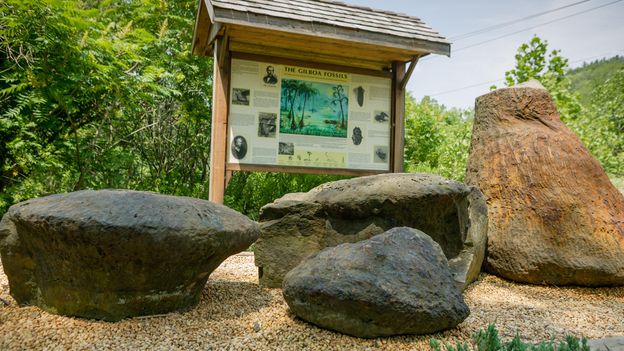The ancient environments in Cairo and Gilboa were markedly different. Gilboa had water-soaked forests punctuated by catastrophic floods that moved massive amounts of sand. Cairo saw a quieter environment with both wet and dry periods. A final flood event in Cairo most likely killed the trees in the forests, preserving them like a snapshot in time. Gilboa’s trees experienced a similar snapshot event, but in that case, water helped entomb the trees in sand, creating sandstone casts.
“At the beginning of the Devonian, about 420 million years ago, the tallest plants were only several inches tall. There were no leaves at that point and all the plants were spore bearing. By about 30 million years later, in the middle of the Devonian Period, plants had evolved to tree sized. Gilboa was the first place to make such a major discovery,” explained Ver Straeten.
Some of these fossil casts (the remainders of the Gilboa fossil forests) are now on display at the Gilboa Museum, roughly 40 minutes north-west of Cairo. Gilboa was a thriving town in the late 19th Century but was evacuated and turned into a watershed in 1927 to provide a growing New York City with fresh water. It was during that process when palaeontologists discovered around 40 unique tree fossils, which thrust Gilboa onto the paleontological world stage.
“Our ancestors all lost their homes in Gilboa during the building of the dam that flooded the town, but the positive thing is that they found these Gilboa fossils. They generate a lot of information for the world because these are the first forests that live on Earth and absorbed carbon dioxide,” explained Kristen Wyckoff, a fossil enthusiast, an original founder of the Gilboa Museum in 2005 and the current vice president of the Gilboa Historical Society. “We’re among the oldest trees in the world now.”
One tree in particular dominated the ancient Gilboa fossil forests: Eospermatopteris.









